‘Comfort Women’
Shrines can be found around the city of Seoul reminding their population of their women & young girls who were forcefully or deceptively taken from their homes to ‘serve’ Japan’s soldiers who invaded countries throughout Asia.
Tokyo and Seoul have never agreed on the topic of
‘Comfort Women’
The term “comfort women” is a translation of the Japanese ianfu (慰安婦) which literally means “comforting, consoling woman”.
Historians estimate between 50,000 – 200,000 women were involved.
Young women/girls from every south east asian country captured by Japan were sometimes tricked often harrassed and forced into sexual slavery. Women from Korea, China, Java, Phillipines, Burma, Thailand, French Indo-China, Portugese Timor, Malaya, Manchukuo, Taiwan, Papua New Guinea, Dutch East Indies, Hong Kong and Singapore.
Young women/girls from every south east asian country captured by Japan were sometimes tricked often harrassed and forced into sexual slavery. Women from Korea, China, Java, Phillipines, Burma, Thailand, French Indo-China, Portugese Timor, Malaya, Manchukuo, Taiwan, Papua New Guinea, Dutch East Indies, Hong Kong and Singapore.
Women of European origin were also involved from Netherlands and Australia and other European countries. It is estimated there were 200-400 Dutch women alone.
The Koreans, Taiwanese were forcibly taken from their families as very young girls, barely in their teenage years, sent by ships to various countries throughout south east Asia and subjected to the most horrific brutality.
They suffered sexually transmitted diseases, physical violence and terrible deprivation at the hands of the Japanese. Those who returned home were broken and often too ashamed to return to their families.
Australian POWs saw comfort women arriving at the Burma-‘Thai Railway Camps for the Japanese guards. POWs were distressed to see the state of the women and despised the Japanese guards.
There were few alleged crimes against comfort women brought to the Tokyo War Trials. It is estimated more than 2,000 women from Korea were recruited, most were abducted to work in brothels to serve the Japanese in WW2.
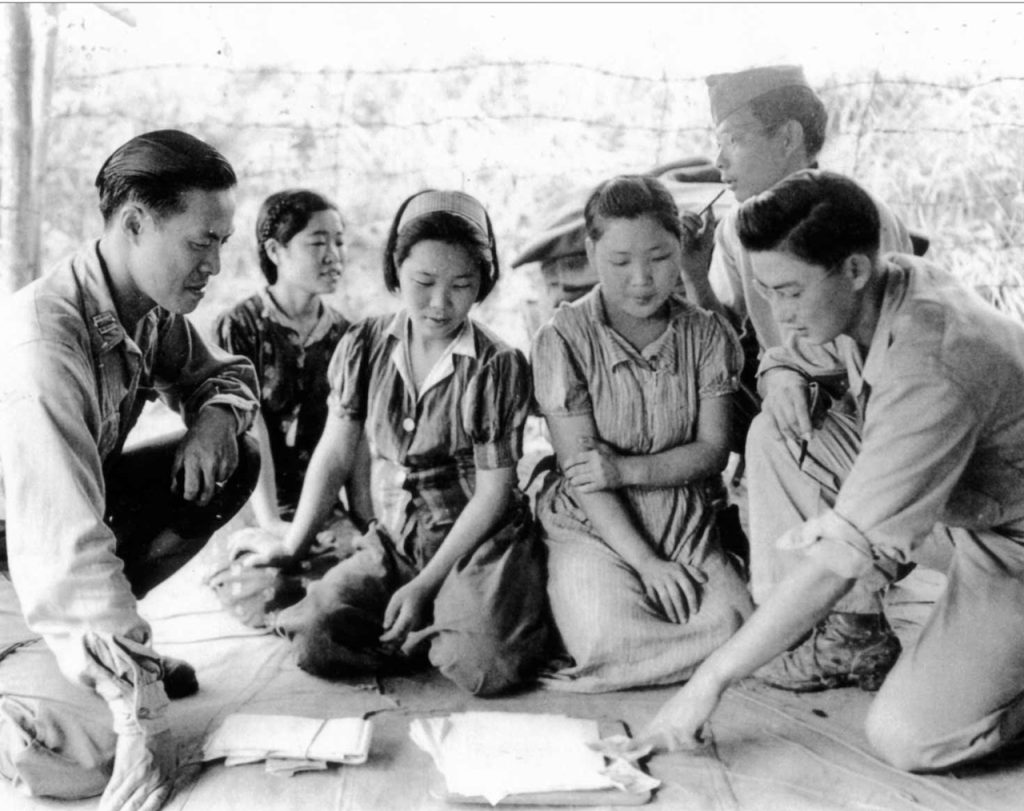
Above: US Troops with Comfort Women in Burma – after the war.

After 73 long years, in 2017 the first known footage of “comfort women” forced to work as sex slaves for Japanese soldiers during World War II has been released by South Korea.
The 1944 video, which was filmed by an American soldier, is a black-and-white clip and women are lined up outside a brick house A Reuters report, citing research from Seoul National University, said the women were found by U.S.-China allied forces in Yunnan province.

In December 2015 Japan’s Prime Minister Shinzo Abe apologised to Korean women used by soldiers as sex slaves and pledged more than £5.37m to help the victims.
The world’s first ever footage of Korean sex slaves used by Japanese soldiers during WWII has emerged. One woman in a dirty blouse talks to a Chinese officer while others stare nervously at the ground.
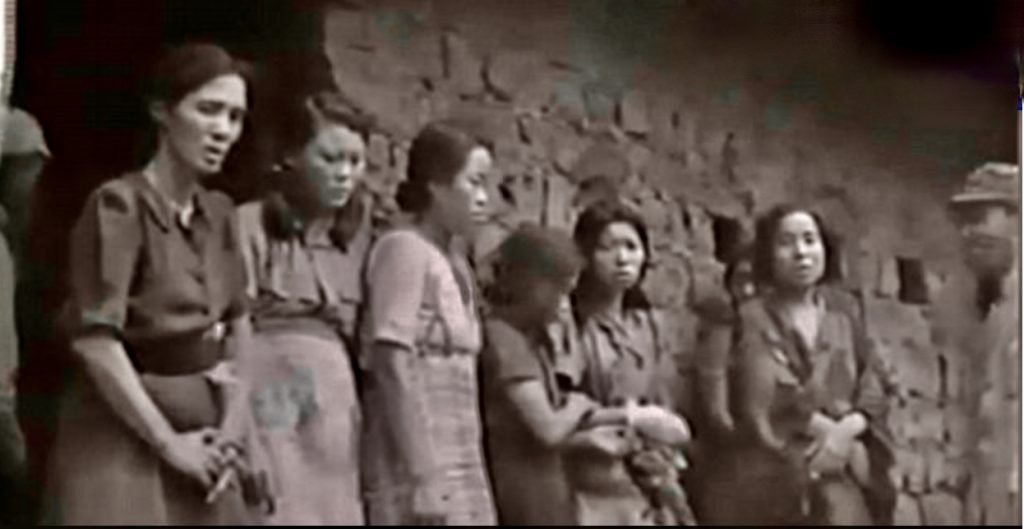
Known as ‘comfort women’, they were raped and sexually assaulted by up to 50 Japanese soldiers a day during the second world war and left with venereal diseases, unwanted pregnancies and ‘big mental scars’ in the women’s lives.
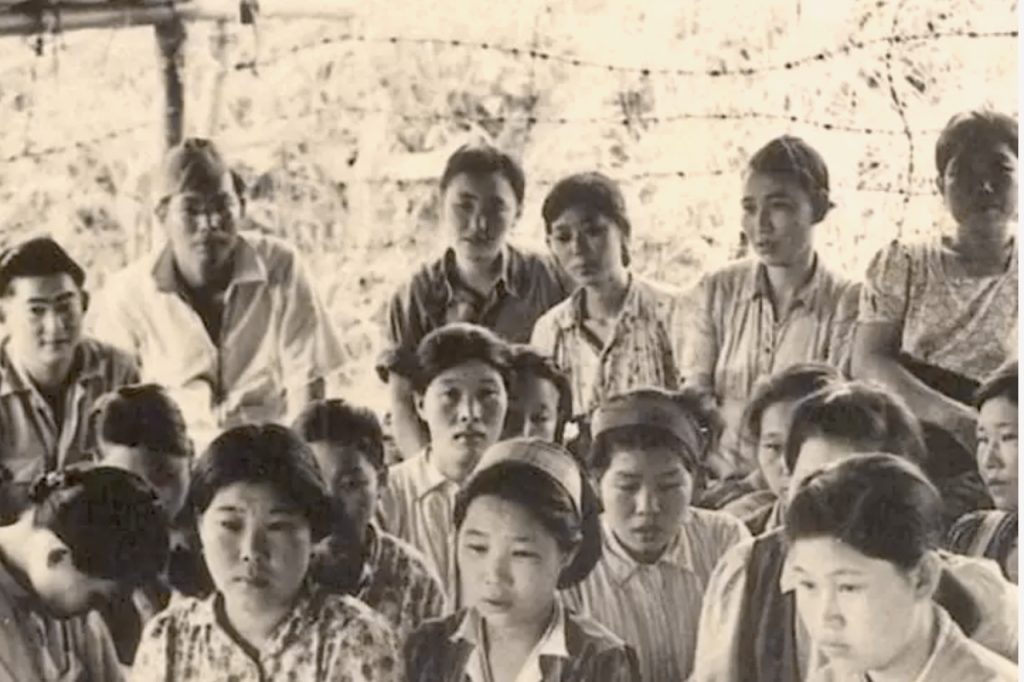
Above: Javanese women taken to Timor.


Above: A South Korean statue instalment of a man resembling Japanese Prime Minister Shinzo Abe bowing to a girl representing South Korea’s ‘comfort women’ has Japanese governmental officials in rage.
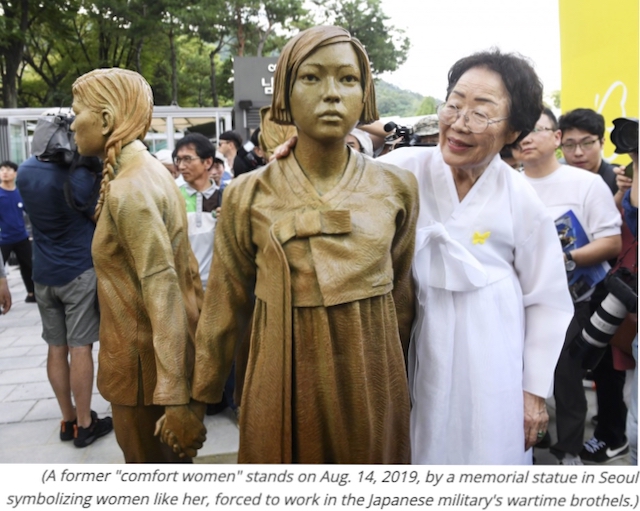
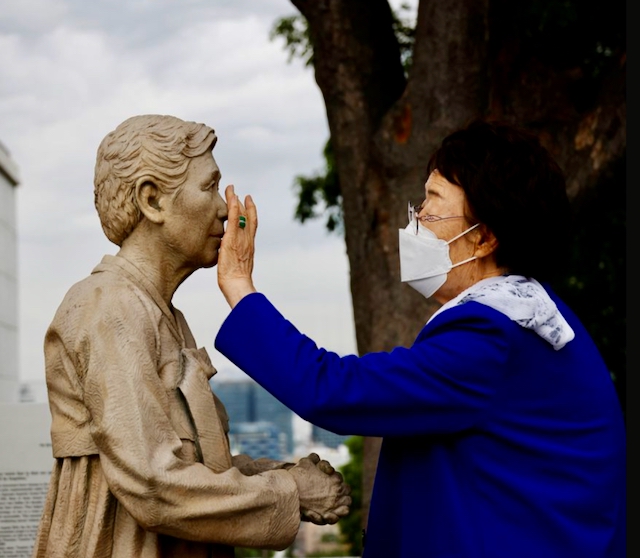

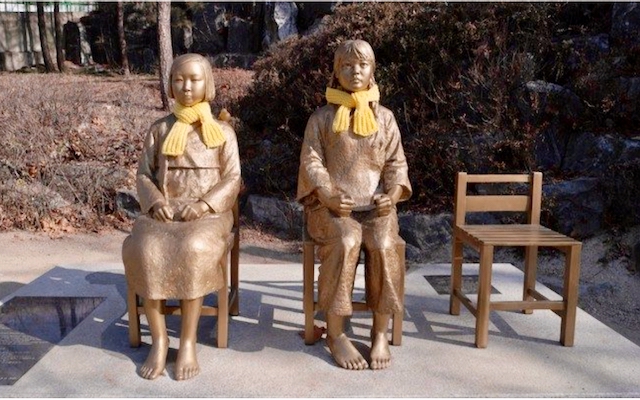

Above and Below: These statues are moved to various locations throughout the city, even outside the Japanese Consulate.

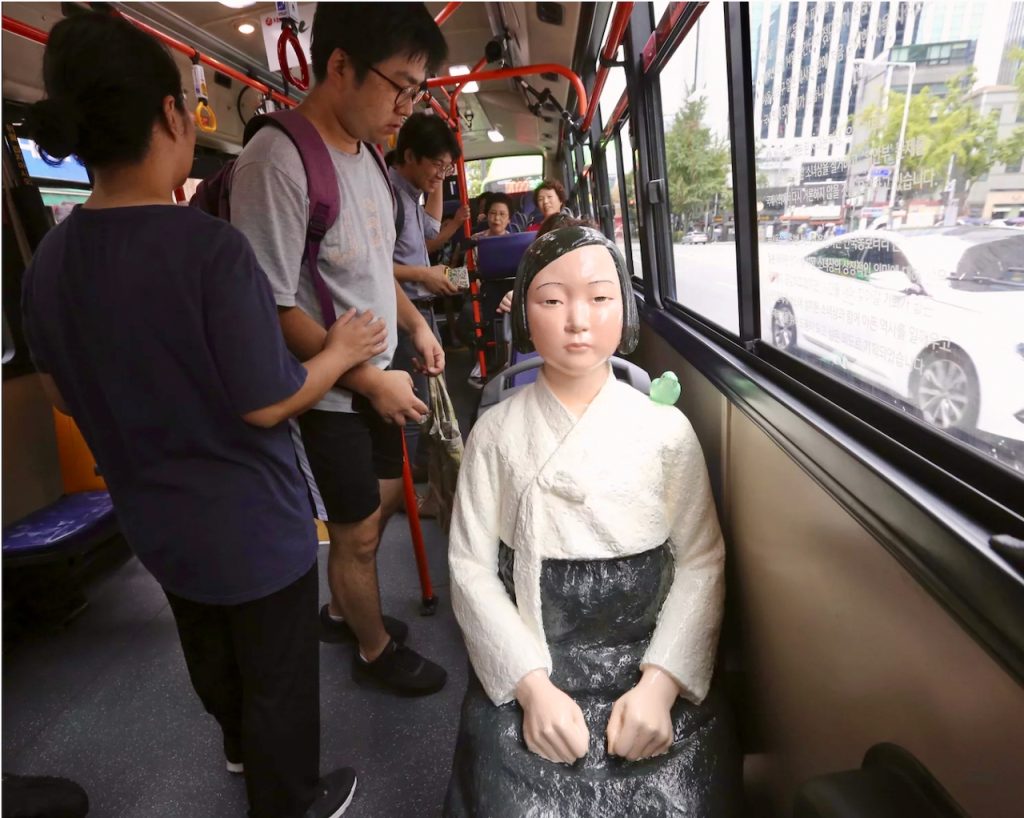
Above: This “comfort woman” statue is placed on a bus seat to mark the 5th International Memorial Day for Comfort Women in Seoul.
WORLD WIDE ‘COMFORT WOMEN’

Above: San Francisco – ‘Comfort Women’ statues prompted Osaka to drop San Francisco as a sister city.

Above: “Statue of Peace” in Berlin angered Japanese officials. It commemorates over 200,000 girls and women from 14 countries forced into sex work by the Japanese military during the Asia-Pacific War.

Above: Shanghai

Above: Taiwan – 2018
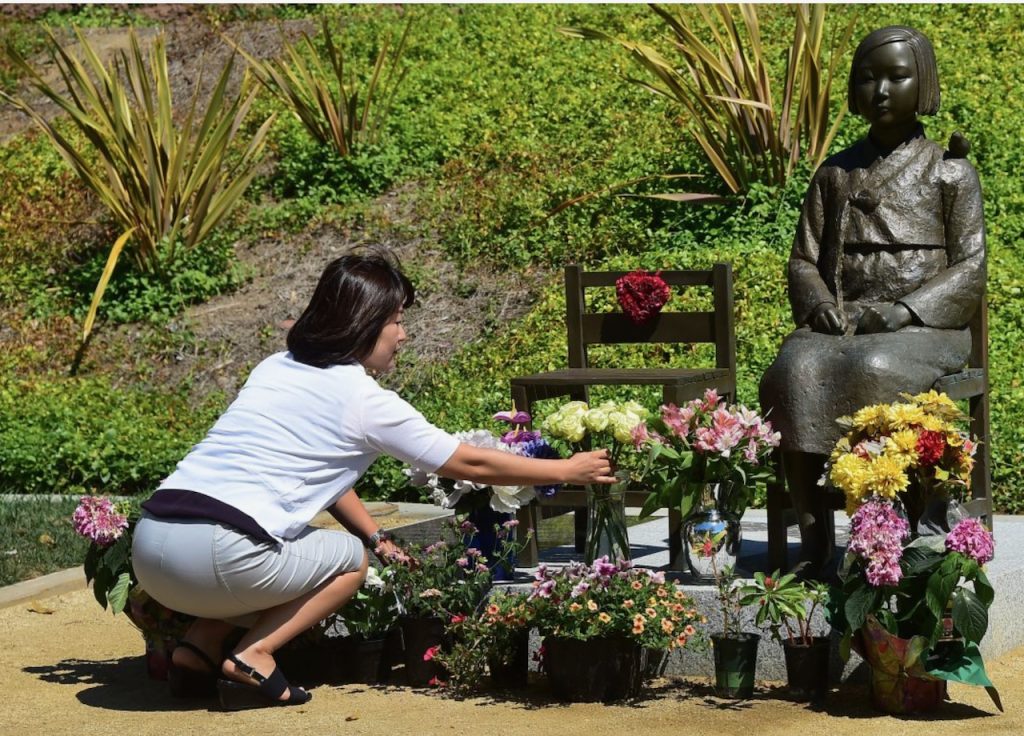
Above: Glendale, USA

Above: Australia 2016. (we wish to acknowledge ABC – unfortunately the link is no longer accessible)
‘The unveiling of a statue in Sydney honouring so-called “comfort women” during WWII is continuing to cause tension between local South Korean and Japanese communities.
The 1.5-metre statue imported from Korea symbolises the hardships endured by tens of thousands of Korean women, who were forced into servitude.
It has been unveiled at Croydon Park in Sydney’s west by a former comfort woman from South Korea, Won-Ok Gil, 89, who flew in for the ceremony.
Ms Gil was forced to work in a “comfort station” at 13 years of age and was and raped hundreds of times by Japanese soldiers.
At the Sydney unveiling, she sat besides the peace monument and became too emotional to speak.
“I do not feel happy having to remember all those hard years,” Ms Gil said.
Si Hyun Paik of the Peace Statute Establishing Committee said the empty chair serves as a reminder of the victims who have since passed away.
“The Peace Monument is one small way that we can honour the pain and suffering endured by the many girls and women who were drafted to become sex slaves by the Japanese wartime Government during WW2,” he said.
“It is important that we remember the past and in doing so making sure sexual violence against females does not happen in the future.”
Won-Ok Gil (centre) with Reverend Bill Crews, (second from right at front), at the statue’s unveiling.(ABC News: Antoinette Lattouf)
Reverend Bill Crews from the Uniting Church-run charity The Exodus Foundation said last week he would put the statue in the foundation’s gardens in Ashfield, after Strathfield Council refused to approve the statue’s placement within its boundaries.
The charity and the local Korean community were under pressure not to display the statue.
In the past, Japan had refused to accept formal legal responsibility for the women, who were victims of sexual exploitation during WWII, including Korean, Chinese, Dutch and Australian women.
But last year, an agreement was reached between SouthKorea and Japan, with Japan offering an apology and compensation for surviving comfort women.
The president of the Australia-Japan Community Network, Tesshu Yamaoka, said the statue was disturbing the harmony between the two groups in Sydney.
“Nobody has ever denied the existence of the comfort women system, even the Korean Government had their own comfort women system across WWII,” he said.
“Many women suffered, not only Korean women, Japanese women and many other women suffered in the war.”
“We should all be sympathetic to them but we should not use the matter for a political purpose. We have to be fair.”
Reverend Crews said he was angry when he heard that Strathfield Council had rejected the statue.
“I got outraged, this is a statue towards women’s suffering, it doesn’t have anything to do with politics,” he said.
Reverend Crews said it was very moving hearing Ms Gil’s story.
“This is a statue towards all women suffering, lots of women tonight will go home and be bashed by their husbands I think it represents that as well, it’s the start of women saying never again.
“We are singling out those Japanese people that offended, we are not singling out Japanese people as a whole.”
Reverend Crews said he would put the statue in the foundation’s gardens in Ashfield today.
The Australia-Japan Community Network said in a statement that the statue was “far more than just ‘honouring comfort women'”.
“This is the clear evidence that the statue always comes with hatred and aggression,” the statement said.
“It is extremely unfair for the Japanese community having to face this kind of one-sided intimidation while the matter has got nothing to do with the local community where we have been living in harmony with all other ethnic groups.”
The comfort women peace monuments have been erected in 40 cities of Korea, seven in the US and one in Canada.
Sydney’s statue is the ninth monument erected outside of Korea and the first in Australia.’
